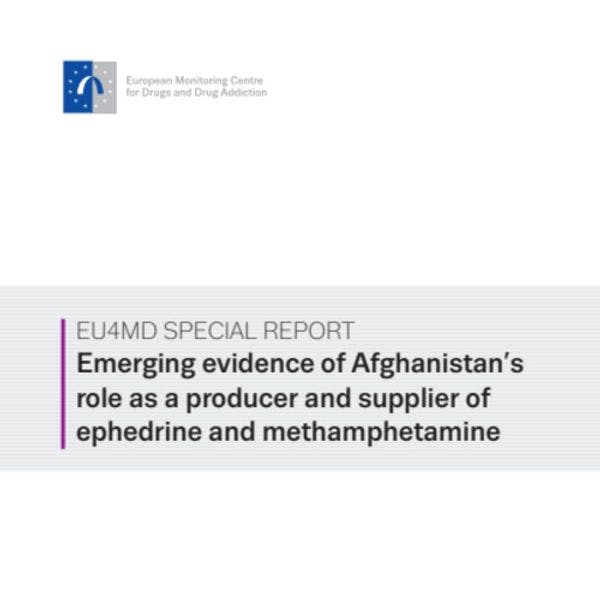Emerging evidence of Afghanistan’s role as a producer and supplier of ephedrine and methamphetamine
Editorial group: David Mansfield (lead author), Andrew Cunningham, Laurent Laniel, Paul Griffiths, Roumen Sedefov
EMCDDA project group: Ionut Serbanica, Thomas Néfau, Robert Patrancus, Ilze Jekabsone
This paper provides an analysis of the available data that suggest that a methamphetamine industry is rapidly being established in Afghanistan. The analysis provided here is based on information from key informants, documentary sources and the analysis of satellite imagery. Although the findings must be regarded as preliminary and require further verification and follow up, they are worrying. The situation also appears to be a particularly dynamic one, with recent developments in methamphetamine production in the country, including the transition from production based on ephedrine extracted from over-the-counter medicines to ephedrine isolated from ephedra plants (Mansfield and Soderholm, 2019).
The paper also highlights an expanding market for ephedra that links the mountainous central region of Afghanistan to the former deserts of the south-west (Mansfield et al., 2019). This work is based on qualitative exploratory research conducted in August 2020 with ephedrine and methamphetamine ‘cooks’ in the district of Bakwa, south-west Afghanistan, combined with the analysis of high-resolution satellite imagery of the region. This research documents how some households in the once barren desert landscape of Bakwa appear to have diversified from farming a limited range of crops that included opium poppy to a livelihood that now also includes the processing of ephedrine and methamphetamine. This paper makes an initial assessment of the potential scale of methamphetamine production in this district, as well as highlighting the opportunities for employment and income that this rapidly developing economy generates for the area. The data available suggest that Afghanistan has in a short period of time become a producer and supplier of relatively large quantities of low-cost ephedrine and methamphetamine, with outputs that may have the potential, over time, to rival the country’s production of opiates. The research also found growing evidence that production in Afghanistan may now be beginning to have an impact on neighbouring states and the international market, and that a threat exists that in the medium term Afghanistan could become a significant source of synthetic drugs.
